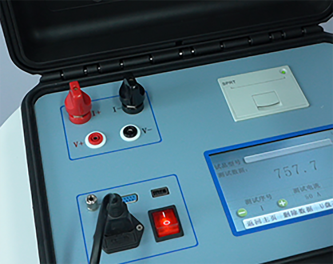 English
English



-
 Afrikaans
Afrikaans -
 Albanian
Albanian -
 Amharic
Amharic -
 Arabic
Arabic -
 Armenian
Armenian -
 Azerbaijani
Azerbaijani -
 Basque
Basque -
 Belarusian
Belarusian -
 Bengali
Bengali -
 Bosnian
Bosnian -
 Bulgarian
Bulgarian -
 Catalan
Catalan -
 Cebuano
Cebuano -
 China
China -
 China (Taiwan)
China (Taiwan) -
 Corsican
Corsican -
 Croatian
Croatian -
 Czech
Czech -
 Danish
Danish -
 Dutch
Dutch -
 English
English -
 Esperanto
Esperanto -
 Estonian
Estonian -
 Finnish
Finnish -
 French
French -
 Frisian
Frisian -
 Galician
Galician -
 Georgian
Georgian -
 German
German -
 Greek
Greek -
 Gujarati
Gujarati -
 Haitian Creole
Haitian Creole -
 hausa
hausa -
 hawaiian
hawaiian -
 Hebrew
Hebrew -
 Hindi
Hindi -
 Miao
Miao -
 Hungarian
Hungarian -
 Icelandic
Icelandic -
 igbo
igbo -
 Indonesian
Indonesian -
 irish
irish -
 Italian
Italian -
 Japanese
Japanese -
 Javanese
Javanese -
 Kannada
Kannada -
 kazakh
kazakh -
 Khmer
Khmer -
 Rwandese
Rwandese -
 Korean
Korean -
 Kurdish
Kurdish -
 Kyrgyz
Kyrgyz -
 Lao
Lao -
 Latin
Latin -
 Latvian
Latvian -
 Lithuanian
Lithuanian -
 Luxembourgish
Luxembourgish -
 Macedonian
Macedonian -
 Malgashi
Malgashi -
 Malay
Malay -
 Malayalam
Malayalam -
 Maltese
Maltese -
 Maori
Maori -
 Marathi
Marathi -
 Mongolian
Mongolian -
 Myanmar
Myanmar -
 Nepali
Nepali -
 Norwegian
Norwegian -
 Norwegian
Norwegian -
 Occitan
Occitan -
 Pashto
Pashto -
 Persian
Persian -
 Polish
Polish -
 Portuguese
Portuguese -
 Punjabi
Punjabi -
 Romanian
Romanian -
 Russian
Russian -
 Samoan
Samoan -
 Scottish Gaelic
Scottish Gaelic -
 Serbian
Serbian -
 Sesotho
Sesotho -
 Shona
Shona -
 Sindhi
Sindhi -
 Sinhala
Sinhala -
 Slovak
Slovak -
 Slovenian
Slovenian -
 Somali
Somali -
 Spanish
Spanish -
 Sundanese
Sundanese -
 Swahili
Swahili -
 Swedish
Swedish -
 Tagalog
Tagalog -
 Tajik
Tajik -
 Tamil
Tamil -
 Tatar
Tatar -
 Telugu
Telugu -
 Thai
Thai -
 Turkish
Turkish -
 Turkmen
Turkmen -
 Ukrainian
Ukrainian -
 Urdu
Urdu -
 Uighur
Uighur -
 Uzbek
Uzbek -
 Vietnamese
Vietnamese -
 Welsh
Welsh -
 Bantu
Bantu -
 Yiddish
Yiddish -
 Yoruba
Yoruba -
 Zulu
Zulu
titration apparatus
The Importance of Titration Apparatus in Analytical Chemistry
Titration is a fundamental technique in analytical chemistry used to determine the concentration of a solute in a solution. The success and accuracy of a titration largely depend on the setup and the precision of the titration apparatus employed. This article discusses the importance of titration apparatus, highlighting its components, applications, and advancements.
At its core, a typical titration apparatus consists of several key components a burette, a pipette, a conical flask, and a white tile. The burette is used to deliver a variable volume of titrant, which is the solution of known concentration. The pipette measures and transfers a fixed volume of the analyte, the solution whose concentration is to be determined. The conical flask is where the reaction occurs, and the white tile underneath aids in visualizing the color change during the titration process.
Accuracy in titration is paramount, as even slight deviations can lead to significant errors in chemical analysis. High-quality burettes, for instance, are designed for precision, with scale markings that allow users to measure to the nearest drop. Modern burettes often come with digital displays, increasing ease of reading and reducing human error. Furthermore, the introduction of automated titrators has revolutionized the process by allowing precise control over the titrant addition, enabling rapid and accurate results in complex analytical procedures.
titration apparatus

The applications of titration are vast and varied. In the pharmaceutical industry, titration is critical in determining the concentration of active ingredients in formulations, ensuring the safety and efficacy of medications. In environmental science, titration is used to analyze water samples for pollutants, helping to monitor water quality and compliance with environmental standards. In food and beverage production, titrimetric analysis determines the acidity of products, influencing flavor and preservation.
Recent advancements in titration apparatus focus on improving efficiency and accuracy. For instance, the integration of sensors and data logging technology allows for real-time analysis and adjustments during titrations. These modern systems can provide automated end-point detection, significantly reducing the potential for user error and enhancing repeatability in results.
Moreover, educational institutions are increasingly adopting virtual titration simulators, enabling students to practice and visualize titration techniques in an interactive environment, reinforcing theoretical knowledge with practical skills.
In conclusion, the titration apparatus is an indispensable tool in analytical chemistry, with components that significantly impact the accuracy and reliability of titrations. As technology continues to evolve, the enhancements in titration apparatus will further streamline chemical analysis, making it an even more valuable technique across various scientific disciplines. The ongoing importance of titration in fields ranging from pharmaceuticals to environmental science positions it as a cornerstone of quantitative analysis.
-
Testing Equipment Industry Sees Major Advancements in 2025: Smart & Precision Technologies Lead the WayNewsJun.06,2025
-
Applications of Direct Current Generators in Renewable Energy SystemsNewsJun.05,2025
-
Hipot Tester Calibration and Accuracy GuidelinesNewsJun.05,2025
-
Digital Circuit Breaker Analyzer Features and BenefitsNewsJun.05,2025
-
Benefits of Real-Time Power Quality Monitoring Devices for Industrial EfficiencyNewsJun.05,2025
-
Earth Fault Loop Testing in High-Rise Building Electrical SystemsNewsJun.05,2025



